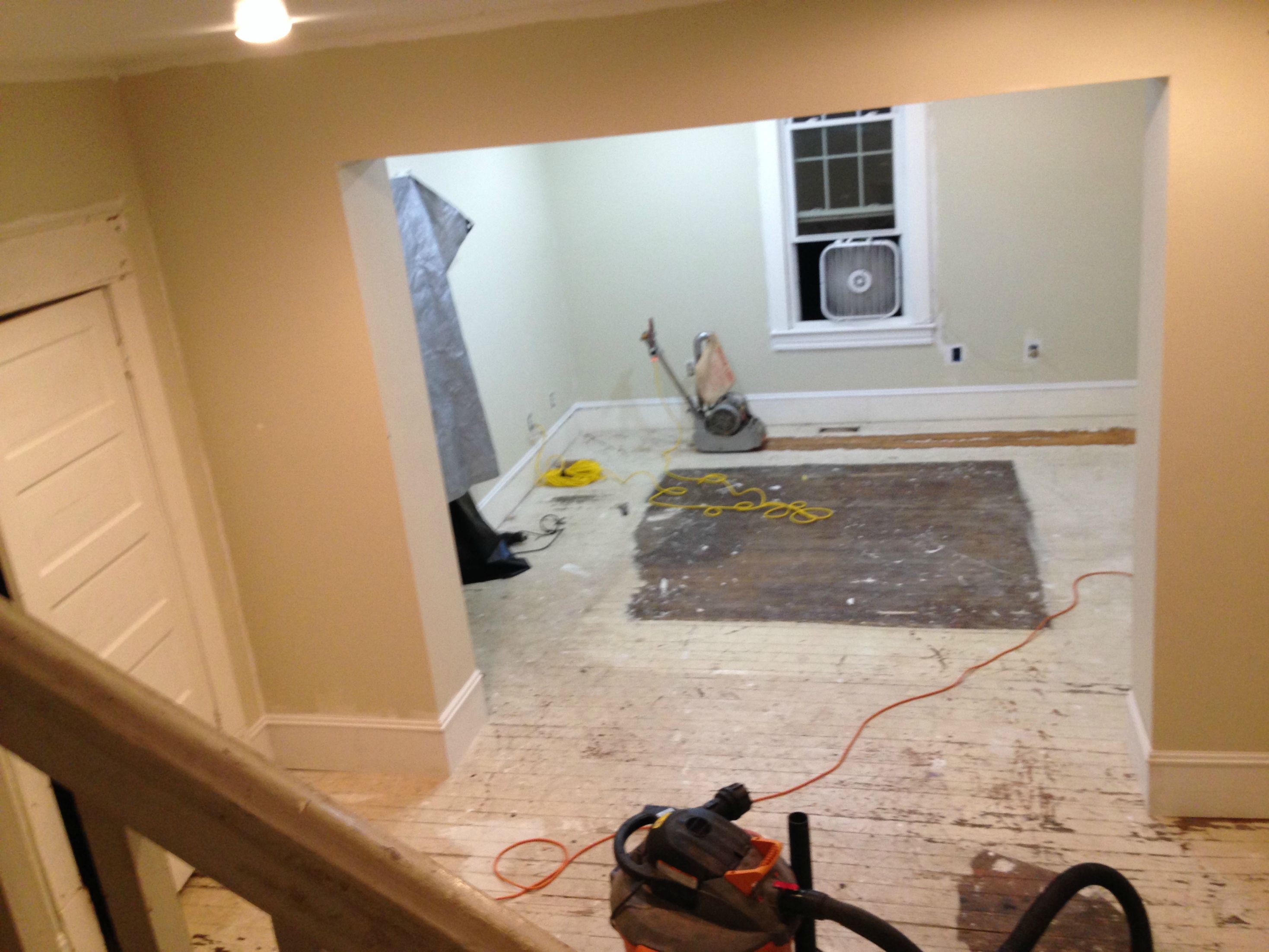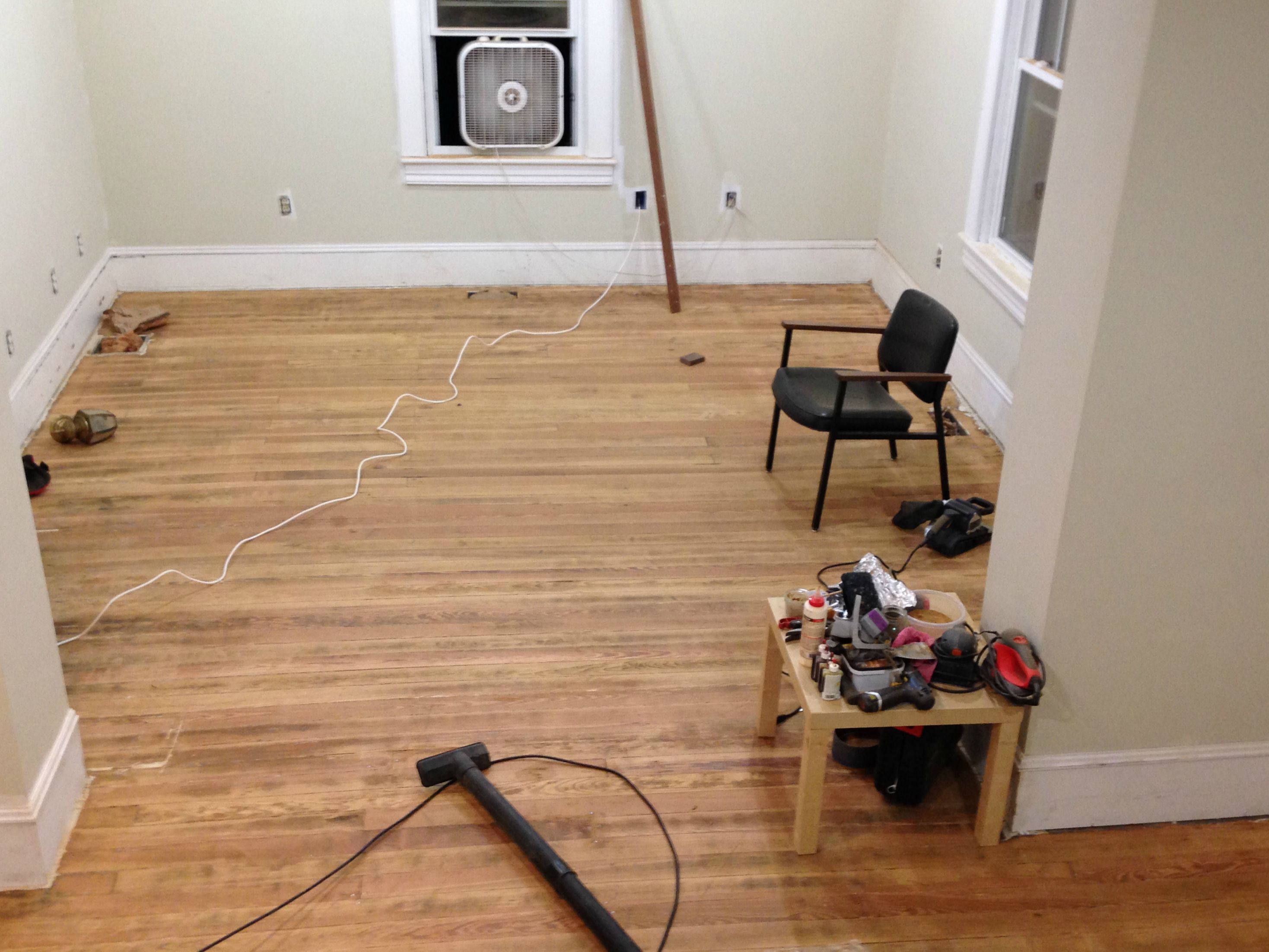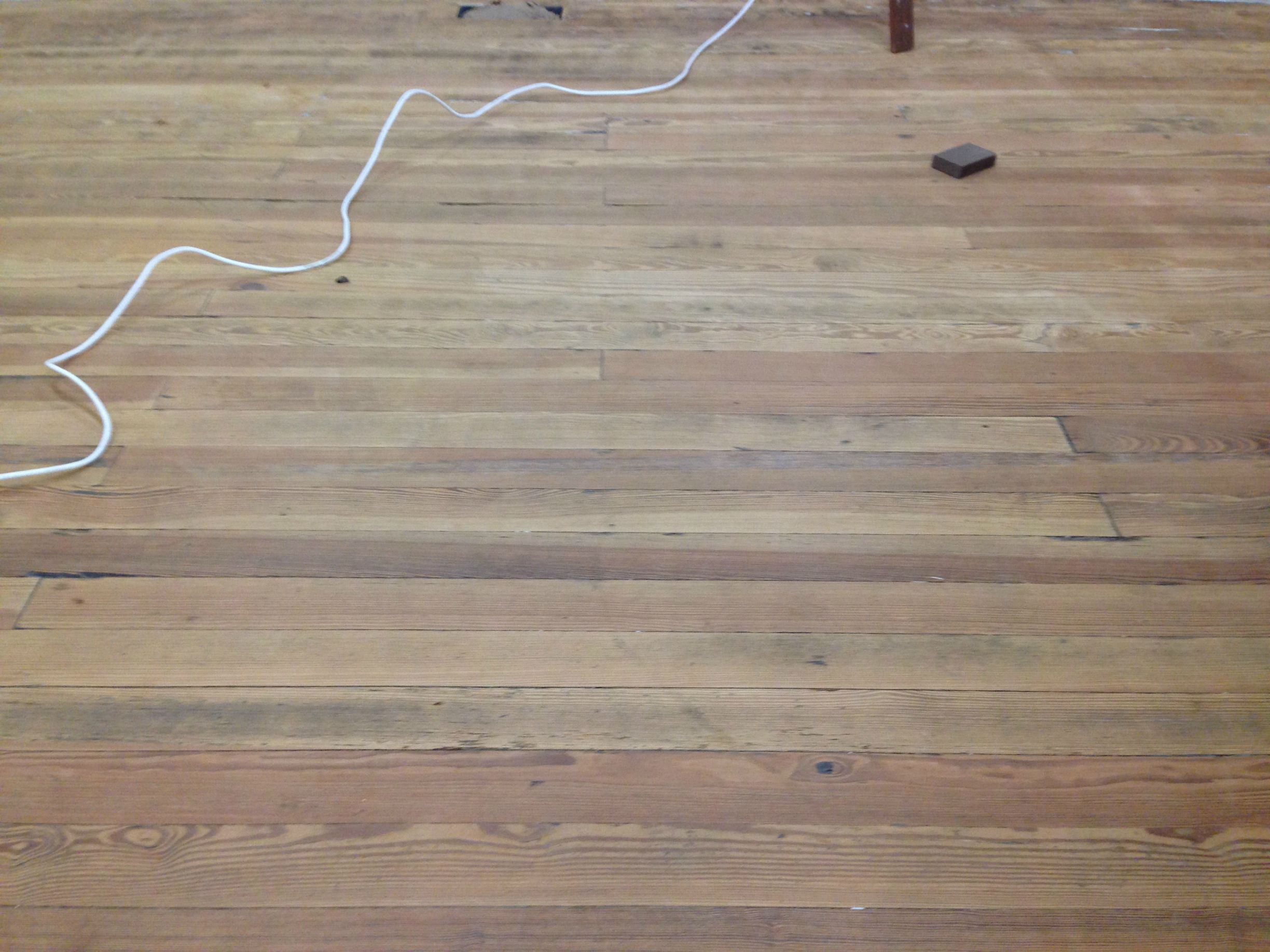natmayhew
New Member
Hey folks, I wanted to share my project and welcome any comments or advice/critique on what I'm doing here. The house I'm working on is an old foursquare (1920) that sits in Southwest Virginia. This house has what I believe to be yellow pine laid as sub-flooring. Aside from the kitchen and baths, all of the floors in the rooms have been painted and most of the rooms have a mysterious unpainted section in the middle. I'm thinking they painted around a rug or bed or something but am unsure. Right after I moved in I had a flooring pro take a look and his advice was to carpet or laminate. He said I would never get the all the paint out, that it probably has seeped too deep and would be too much work if not impossible. So I worked on other projects like the walls, windows, electrical, etc and saved the flooring for last.
I had almost ordered carpet for the whole house and the day I went to take measurements for the order I got a wild hare and broke out some tools to gauge just how deep the paint actually was. I sanded a small section of a bedroom with just a palm sander w/60 grit and that was enough to let me know that there was good wood underneath that old paint and off I went to the rental shop for a drum sander. So I watched a few youtube videos, crossed my fingers and tried my best not to screw up my floors. I was pretty surprised at the results. I didn't rent an edger but instead used a 3x21 belt sander. This was an experiment and I really didn't expect to get acceptable results so spending as little money as possible and working with the tools I have plus the rental sander for a weekend was all I allowed myself. I'll let the pictures do the rest of the talking. As you can see, the sander left some marks on the floor which is more noticeable in the patina. Had I more experience and knowledge I would have sanded across the grain with 20 grit instead of going with the grain. Also I only had the sander for a weekend. The drum sander wasn't enough to get up all the paint without taking the wood down past the patina which was the real challenge of this project. After returning the sander I realized there was still much detail work to do to remove the paint from the grain and all of the imperfections. Now I have most of the paint out of the grain after some spot sanding and I'm pretty satisfied with the results. I would like to smooth out the floor again but really hate to rent that drum sander again, I'm wondering if I can smooth over the floor with just my belt sander without doing more damage? Or just finish and call it a day? Anyhow there is more work to be done but I'm just not sure of where to take this from here. Anyhow here are the pics...
BEFORE:

AFTER: (after drum sanding, edging with belt sander and detailing)


I had almost ordered carpet for the whole house and the day I went to take measurements for the order I got a wild hare and broke out some tools to gauge just how deep the paint actually was. I sanded a small section of a bedroom with just a palm sander w/60 grit and that was enough to let me know that there was good wood underneath that old paint and off I went to the rental shop for a drum sander. So I watched a few youtube videos, crossed my fingers and tried my best not to screw up my floors. I was pretty surprised at the results. I didn't rent an edger but instead used a 3x21 belt sander. This was an experiment and I really didn't expect to get acceptable results so spending as little money as possible and working with the tools I have plus the rental sander for a weekend was all I allowed myself. I'll let the pictures do the rest of the talking. As you can see, the sander left some marks on the floor which is more noticeable in the patina. Had I more experience and knowledge I would have sanded across the grain with 20 grit instead of going with the grain. Also I only had the sander for a weekend. The drum sander wasn't enough to get up all the paint without taking the wood down past the patina which was the real challenge of this project. After returning the sander I realized there was still much detail work to do to remove the paint from the grain and all of the imperfections. Now I have most of the paint out of the grain after some spot sanding and I'm pretty satisfied with the results. I would like to smooth out the floor again but really hate to rent that drum sander again, I'm wondering if I can smooth over the floor with just my belt sander without doing more damage? Or just finish and call it a day? Anyhow there is more work to be done but I'm just not sure of where to take this from here. Anyhow here are the pics...
BEFORE:

AFTER: (after drum sanding, edging with belt sander and detailing)





